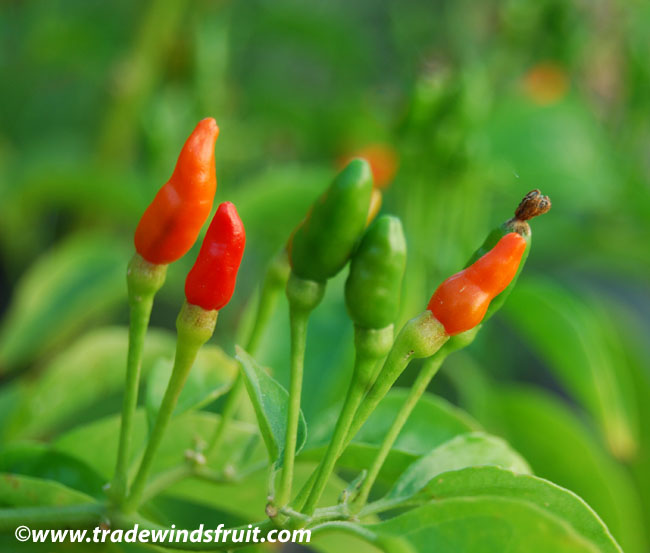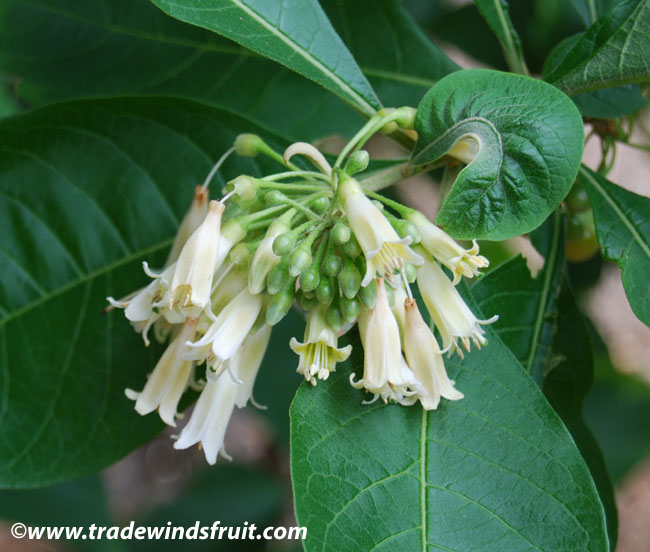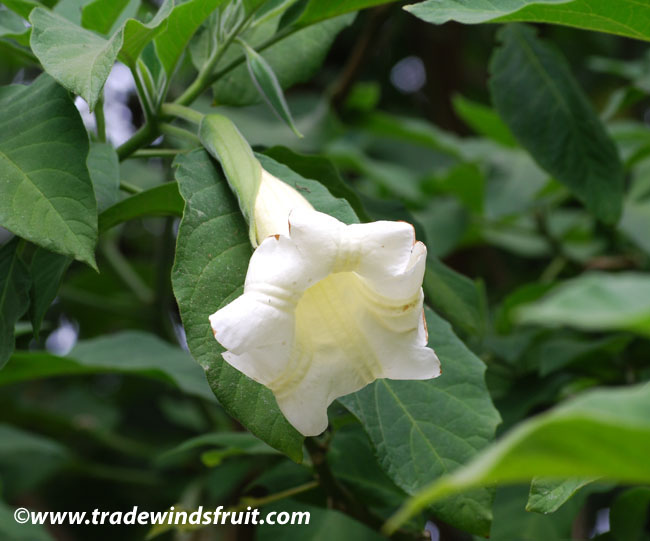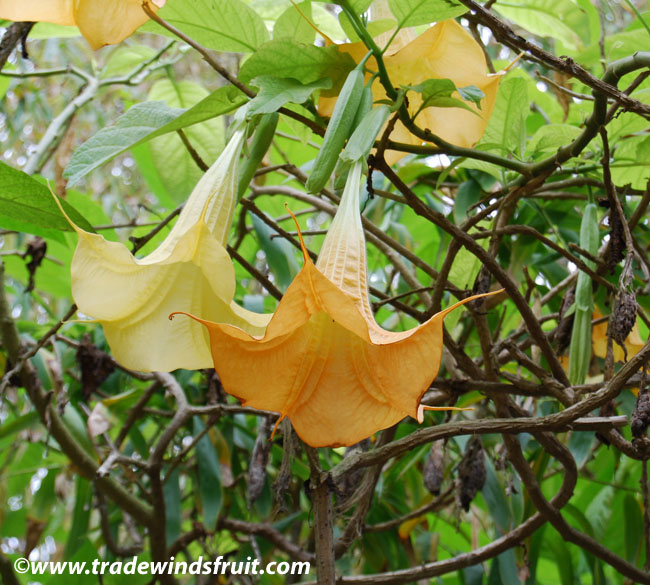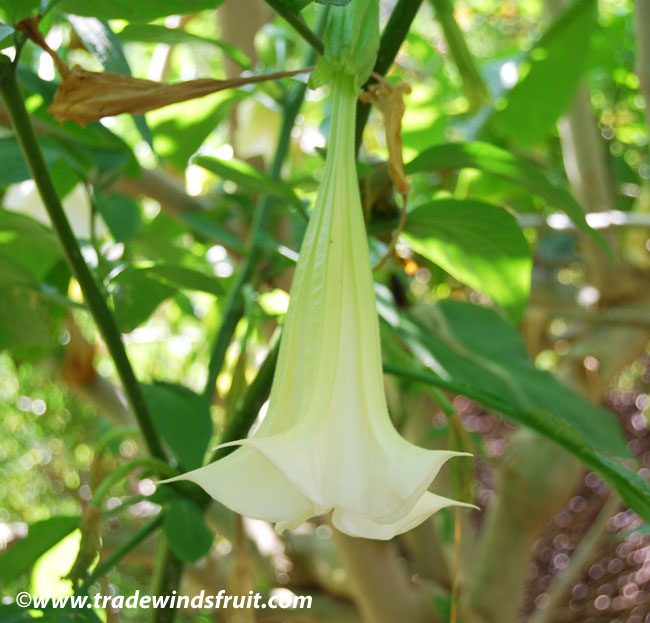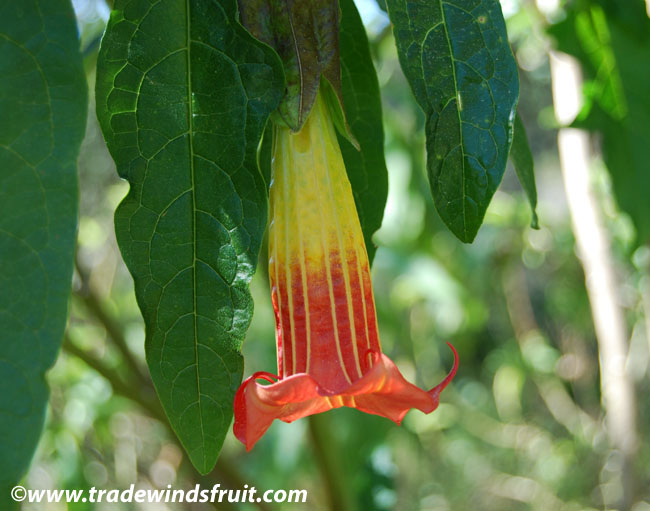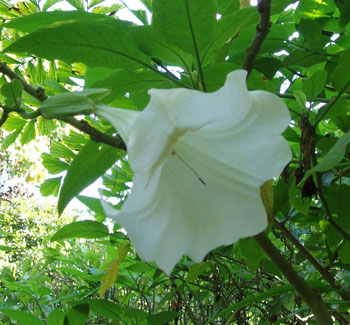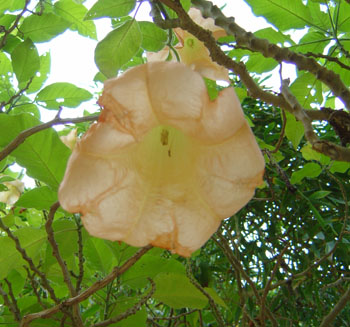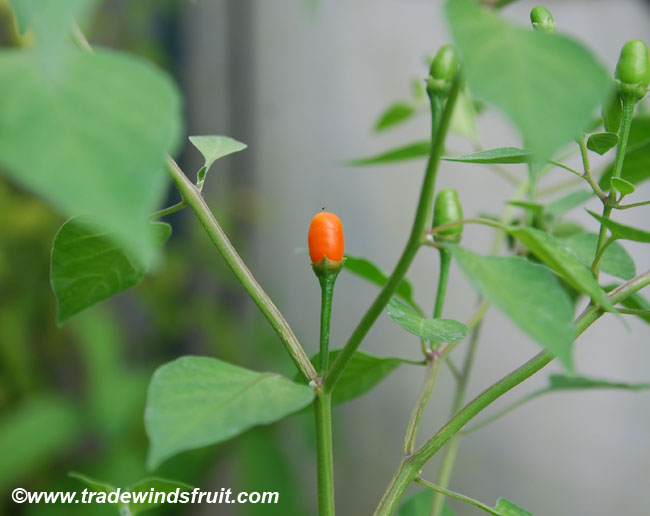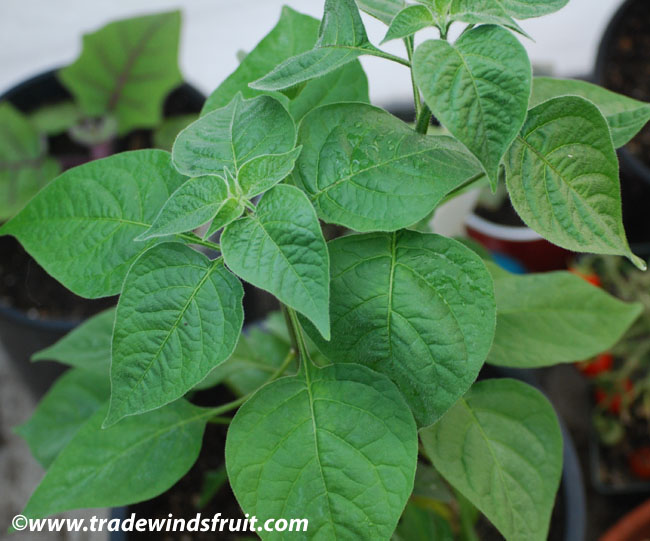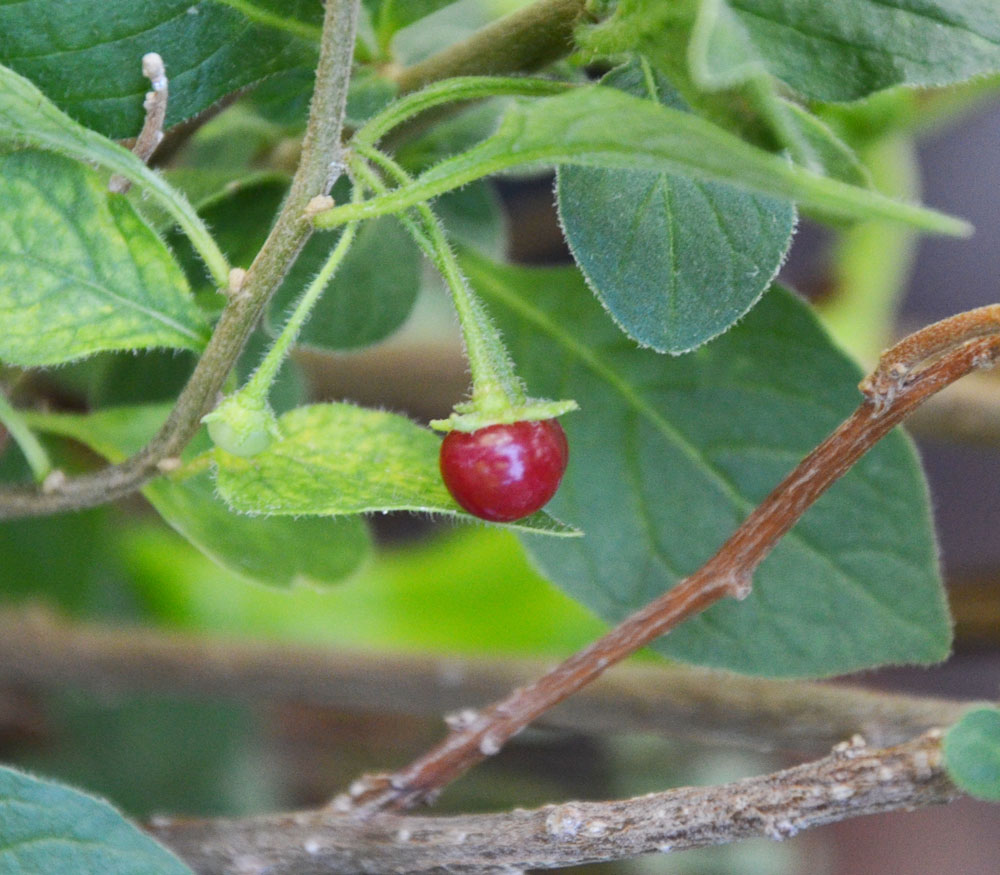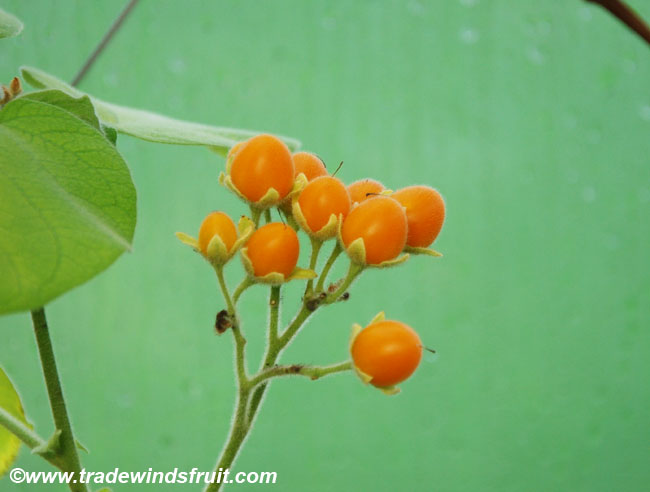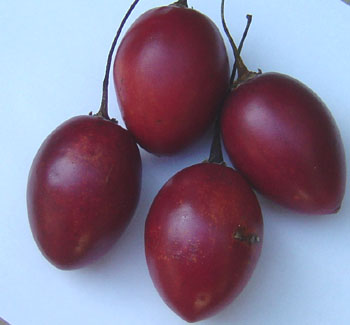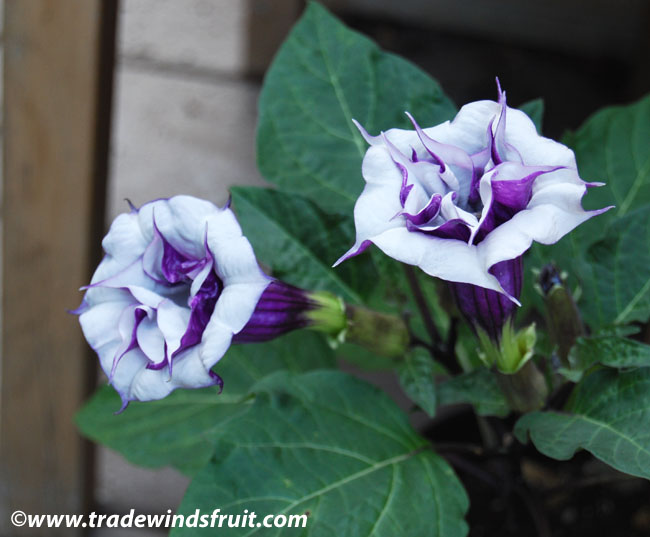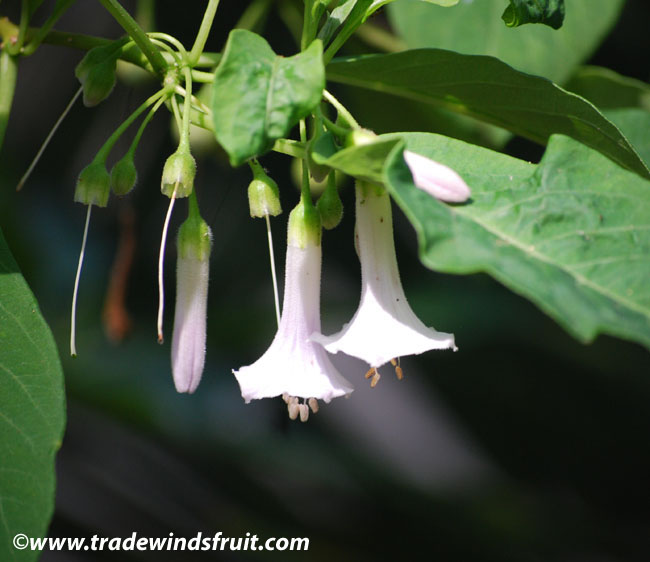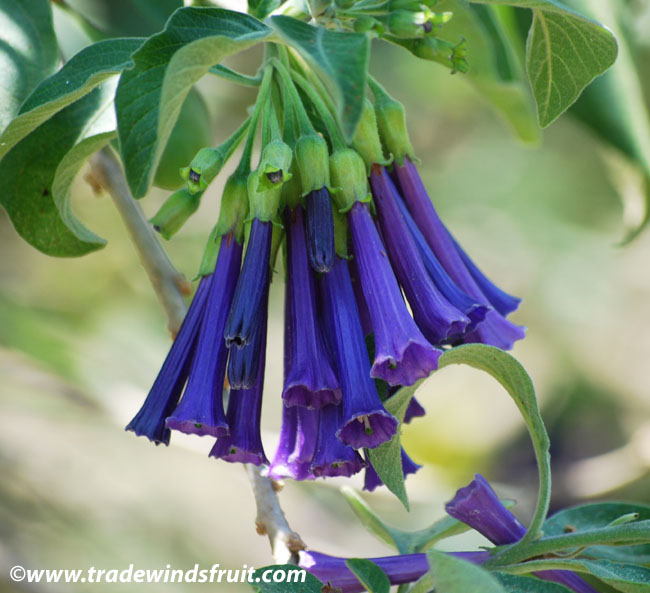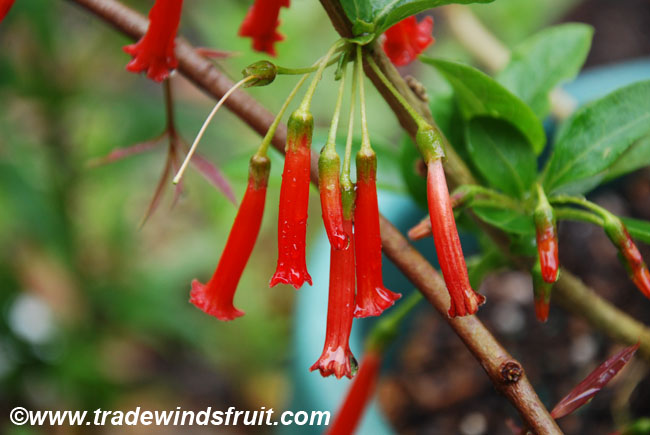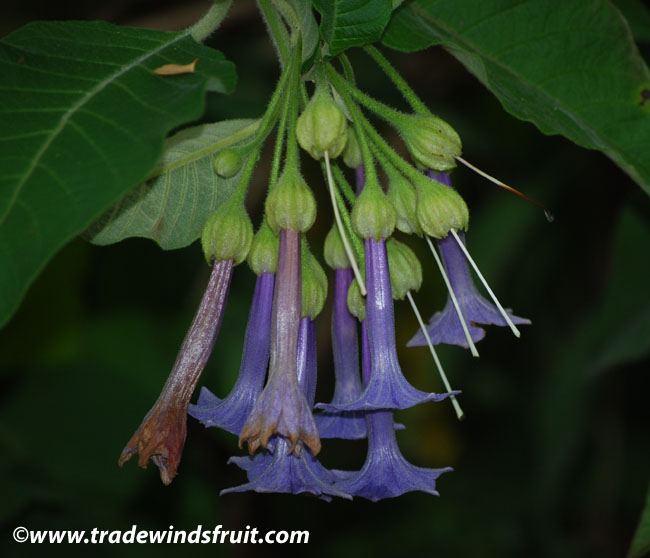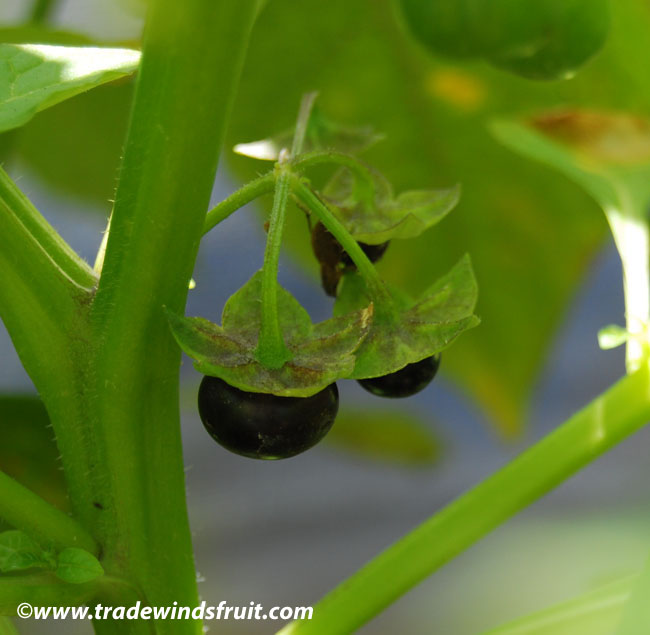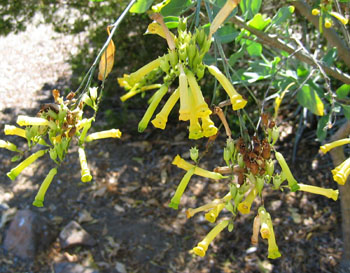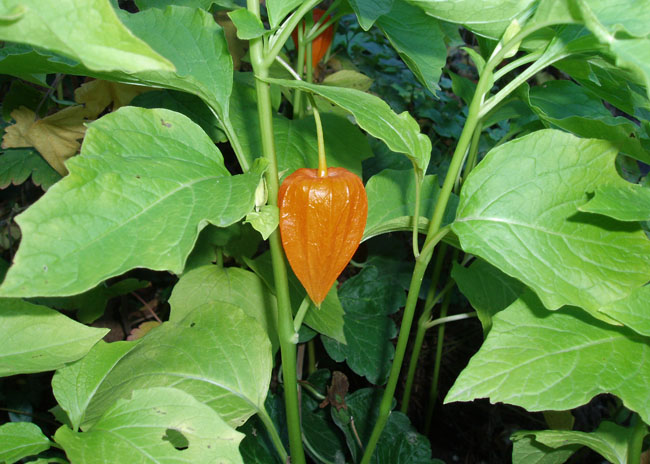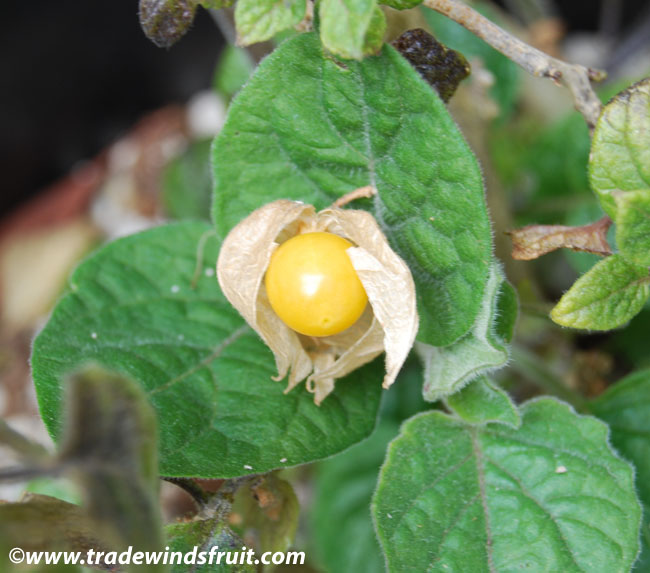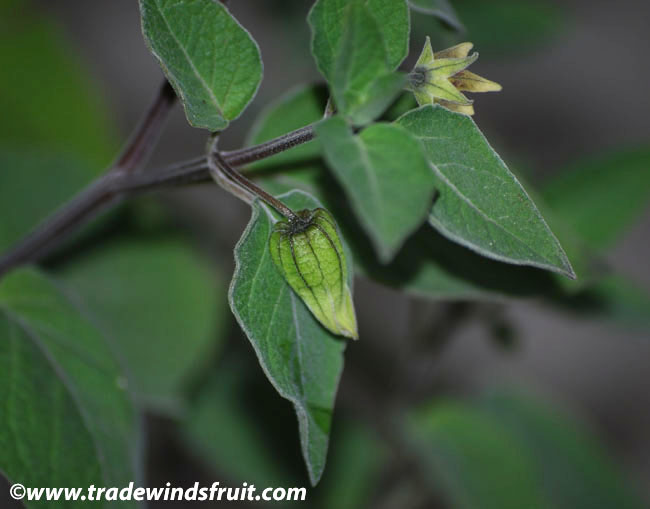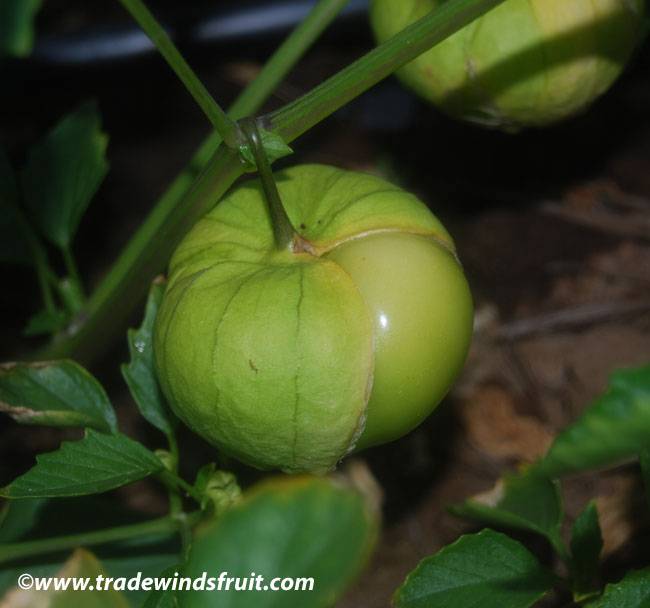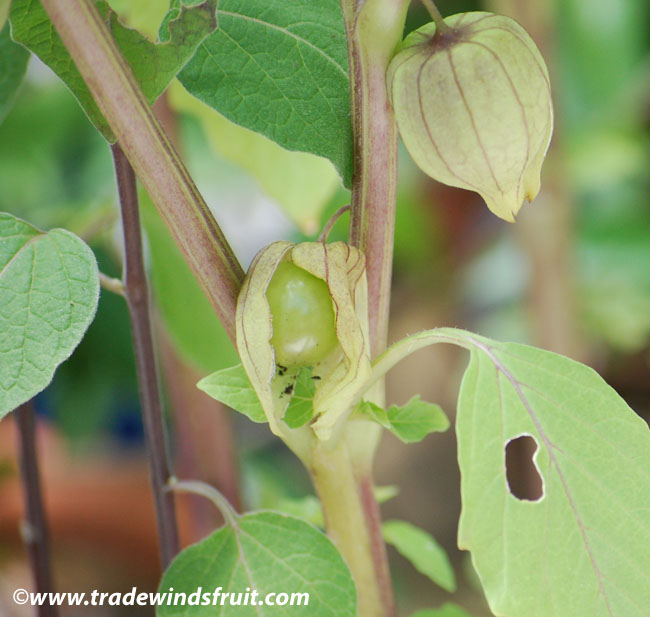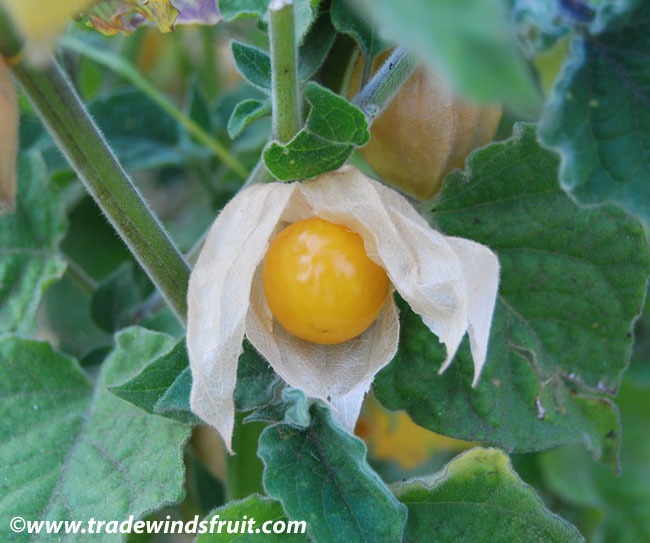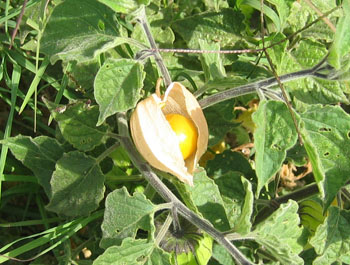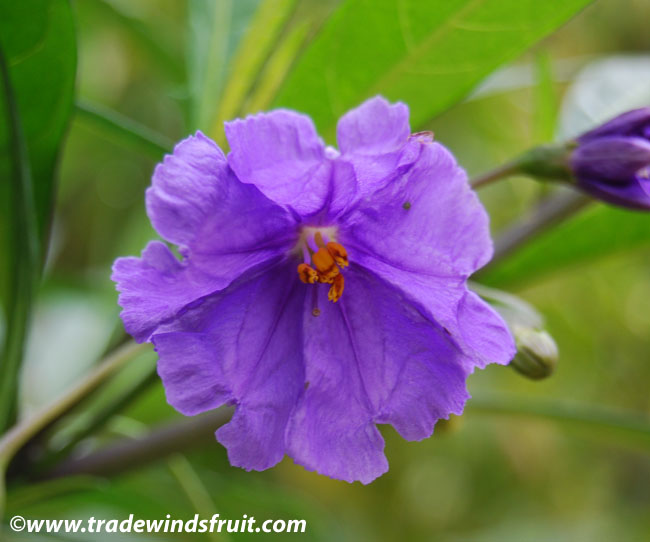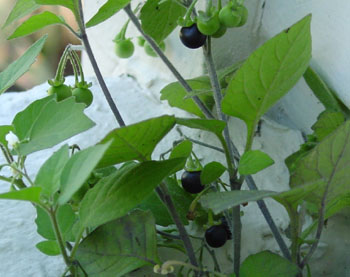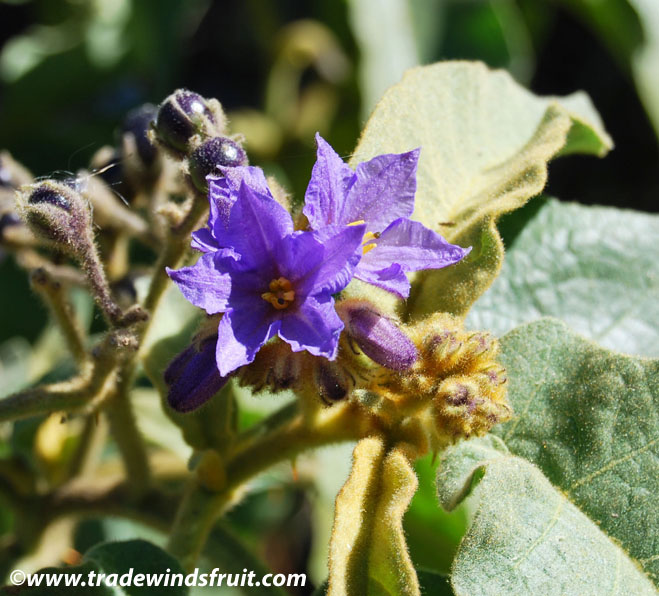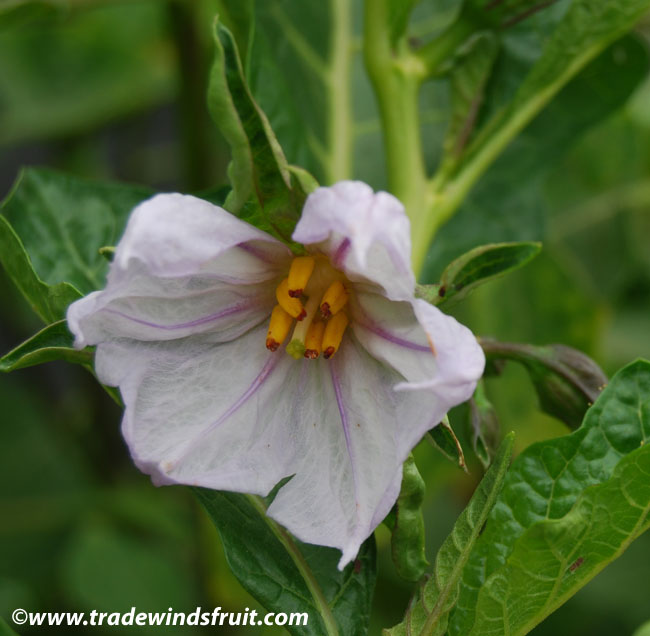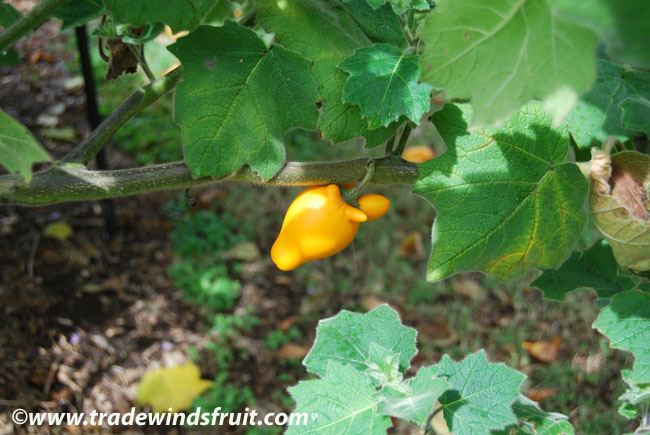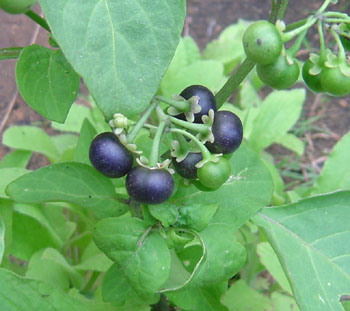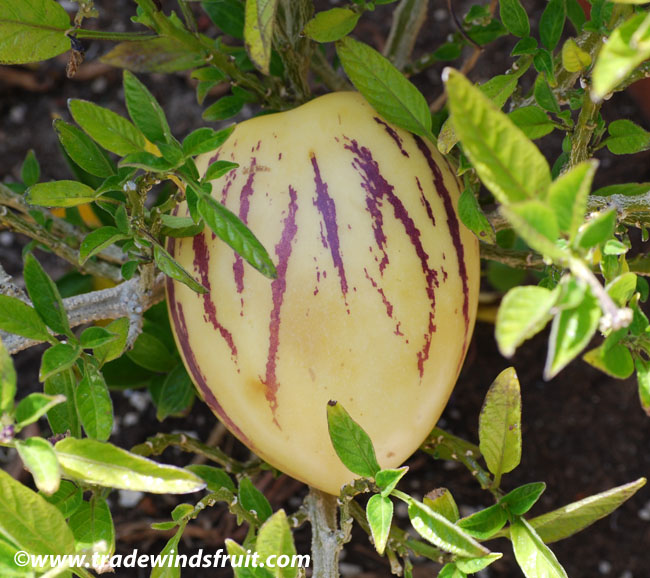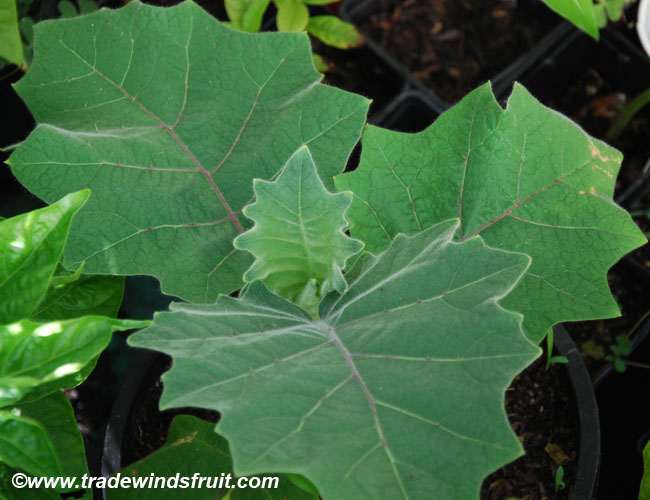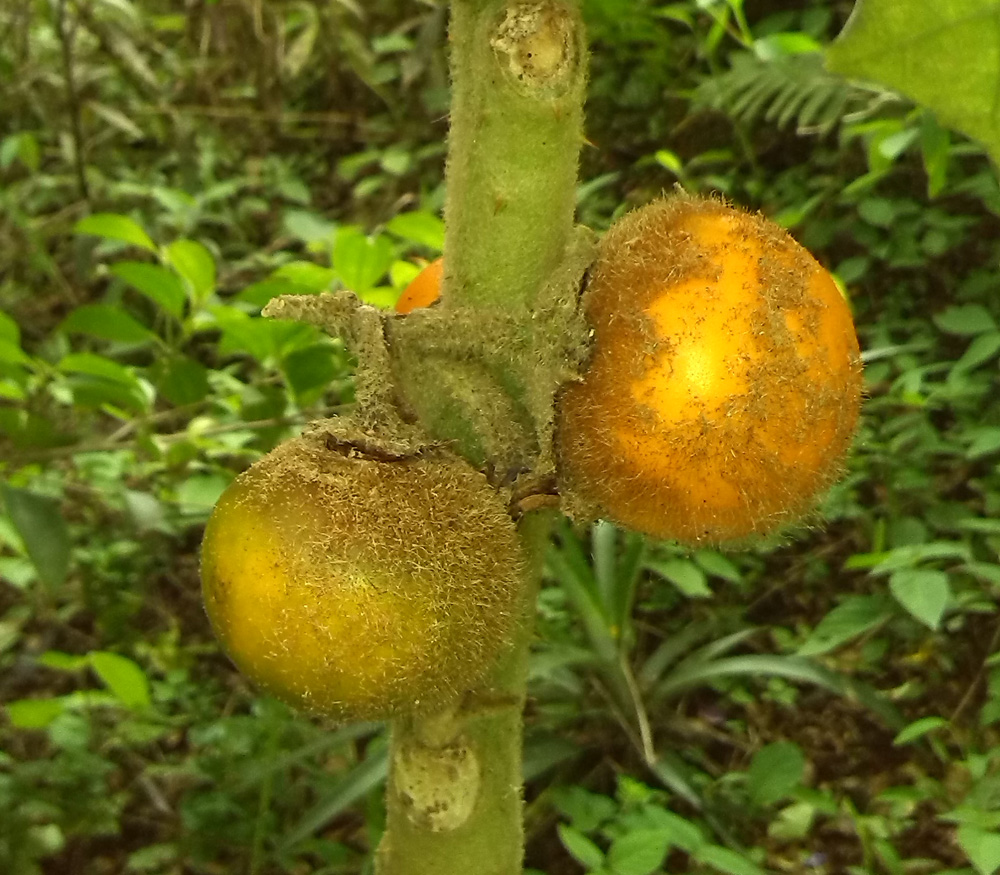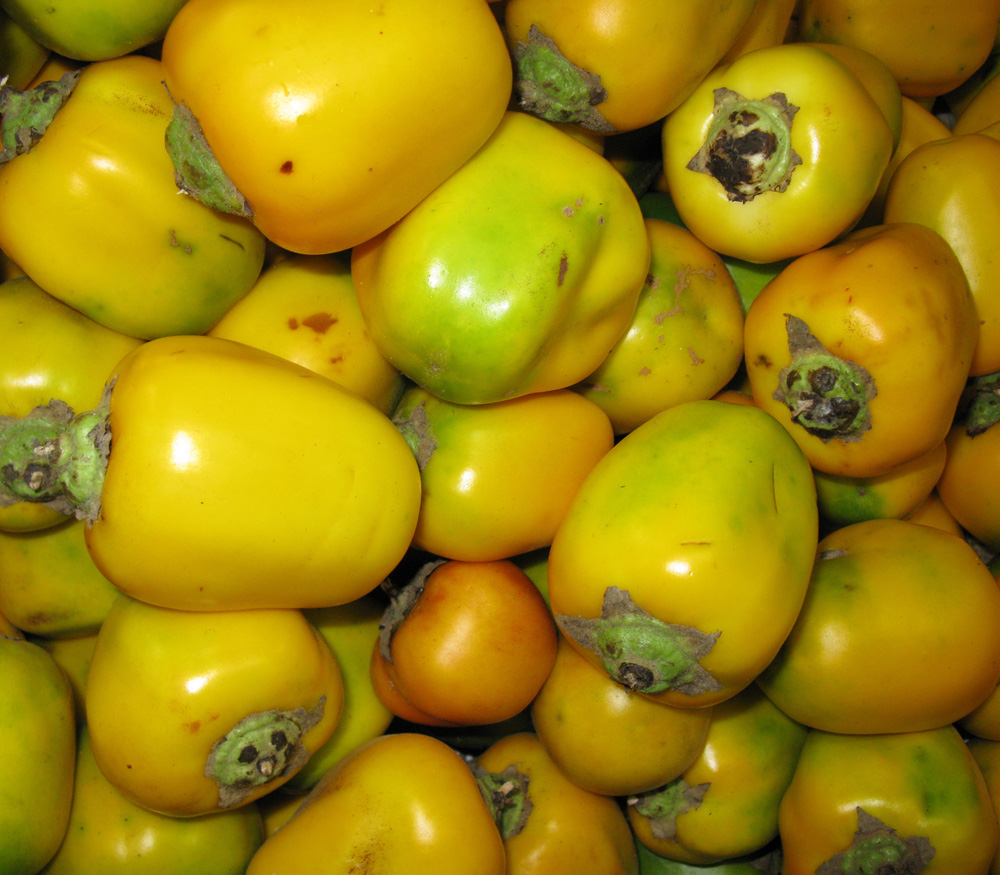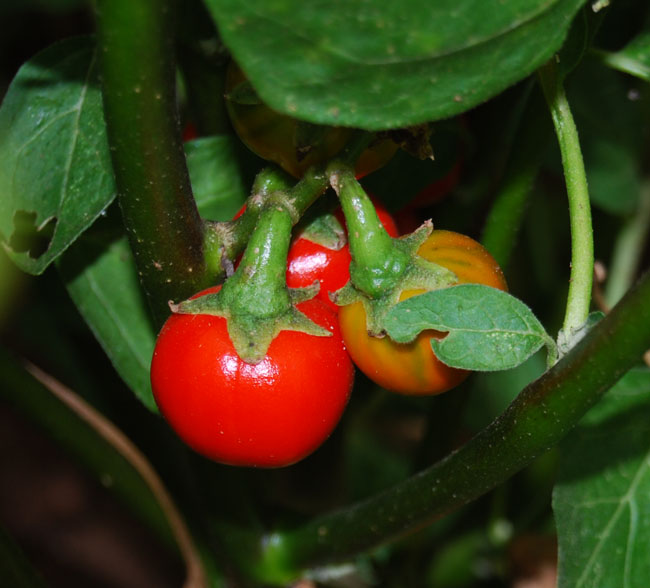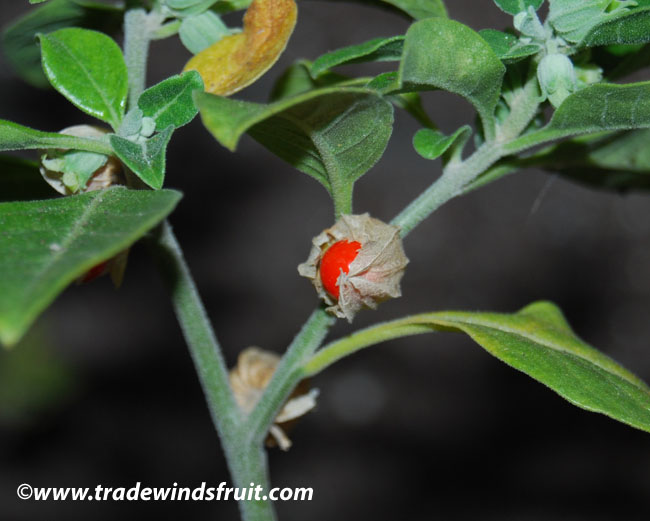- Home »
- Information »
- Capsicum eximium
Capsicum eximium
Capsicum eximium
A rare, wild, hot pepper, bearing small slender fruits that ripen from green to ornage, then red. Flavor is quite hot. The plant is uncommon and an interesting ornamental as well as edible, particularly for the pepper enthusiast.
Seed Availability
Seeds are not available for the Capsicum eximium. Please visit our seed store to view current selections.
Description
Short perennial or annual to a few feet in heigth. Growth habit is similar to common garden peppers although in warm climates this species may form a tree-like habit.
Hardiness
Not frost hardy. Can be grown anywhere as an annual. Perennial in warm climates.
Growing Environment
This pepper would seem to enjoy humid and warm conditions, with regular water. Can be container grown. Grow in full sun and in well-drained soil.
Propagation
By seeds, which can be tricky to germinate. Some seeds will sprout readily but others may take weeks to a few months to germinate. Warm soil at 80F with only moderate water seems to encourage germination. Do not use high peat content soils.
Germination Info
The wild peppers are some of the slowest of all hot peppers to sprout. Germination is also erratic, with varying germination times for individual seeds in a single batch. Allow a minimum of 2-3 months for germination.
Start seeds in small containers from 8-10 weeks prior to the last frost date. Plant seeds approximately 1/4-1/2" deep in moist, well drained potting soil. Most standard soil mixes are suitable for pepper seeds. Soil temperature must be kept at 75-90F for proper germination. Cool soil, particularly at night can inhibit or significantly delay germination. To keep soil temperature warm, start seeds indoors, in a greenhouse and/or use a seed starting heat mat. Keep soil moderately moist, though not overly, dripping wet. Water soil when the soil surface just begins to dry. Allow proper air circulation for containers.
Optionally, seeds can be dipped in a dilute hydrogen peroxide mix (1 tsp hydrogen peroxide per cup water) for one minute to disinfect seeds prior to planting. If your soil or seed setup is susceptible to mold growth this can be useful to kill mold spores.
Once seedlings have sprouted, keep in small containers until a few sets of leaves have developed. Transplant to larger containers or outdoors. If transplanting outdoors, make sure to harden off seedlings by exposing them to only filtered sunlight for up to 1-2 weeks. Thin plants to 3-4 ft and rows to 6-10 ft.
Estimated germination time under optimal conditions: 2-4 months
Uses
Extremely rare in cultivation. Fruits are edible and can be used much like any hot pepper.
Native Range
Native to a small area of Bolivia and Argentina.

